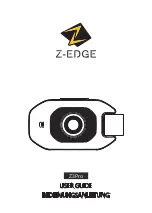
Chapter 2
Leica R-Lenses
3
The Summicron-R 1:2/90mm displays the typical veil of soft
flare over the whole image at full aperture, that is the characte-
ristic of almost every high speed lens of the older generation.
The typical use of the 90mm as a portrait lens could serve as
an explanation and defense of this behavior. The soft reproduc-
tion of image details and subject outlines created a more
friendly image of most faces of the sitters. But one did the
90mm lens an injustice as it restricted its potential universal
use.
The current Apo-Summicron-R 1:2/90mm ASPH (2002) raised
the level of optical quality substantially. The size is very com-
pact and almost equal to that of the current Summilux-R
1:1.4/50mm. Based on size it can be classified as a standard
lens. The optical quality is superb and a revelation. The aspheri-
cal surface is grinded by CNC-equipment in a lengthy and ela-
borate way. Grinding and finishing takes many hours per ele-
ment and is so time consuming because of the many
inspections and checks during the manufacture. If a lens is
manufactured with such accuracy, you need a very careful
assembly. The Leica-typical construction with metal parts of
exact dimensionality is a necessary condition for a high quality
product. This aspherical surface with a large diameter and com-
plex shape has to be assembled with utmost care to ensure
that the theoretical capabilities can be practically available.
The optical construction shows a five single elements, and the
first surface of the third lens has the aspherical shape. True
mastery can be seen in this elegant design. Some time ago one
needed seven or eight lens elements and could not get this high
performance. The low number of elements, the choice of glas-
ses for transparency and color transmission, the effective type
of coating, all work together to provide the remarkably clear
and crisp rendition. The image quality is very, even at full aper-
ture and veiling glare and secondary reflections are absent. If
you take pictures with the sun, directly shining into the front
lens, some aperture reflections can not be avoided.
This layout may be indicative for new designs from Solms. The
classical design with seven or eight elements may be in its final
stage. The current demands have become too high, especially
in relation to the new method of digital capture.
__Three lenses of medium focal length
These three lenses do not only differ in their effect on perspec-
tive but also in their performance at full aperture. Everyone of
these lenses could be described as a general purpose lens, with
exception of the special macro facilities of the Apo-Macro-
Elmarit. The angles of view are close together with 30, 27 and
25 degrees. In reality the differences are bigger. If we take a
picture of a person and a face in vertical format, the subject
distances are as seen in the table below.
Person 1.76 Meter
6.57 Meter
2.08 Meter
1.86 Meter
7.33 Meter
Summilux-R 80 mm f/1.4
Apo-Summicron-R 90 mm f/2 ASPH.
Face 50 cm
Apo-Macro-Elmarit-R 100 mm f/2.8
7.93 Meter
2.25 Meter

































